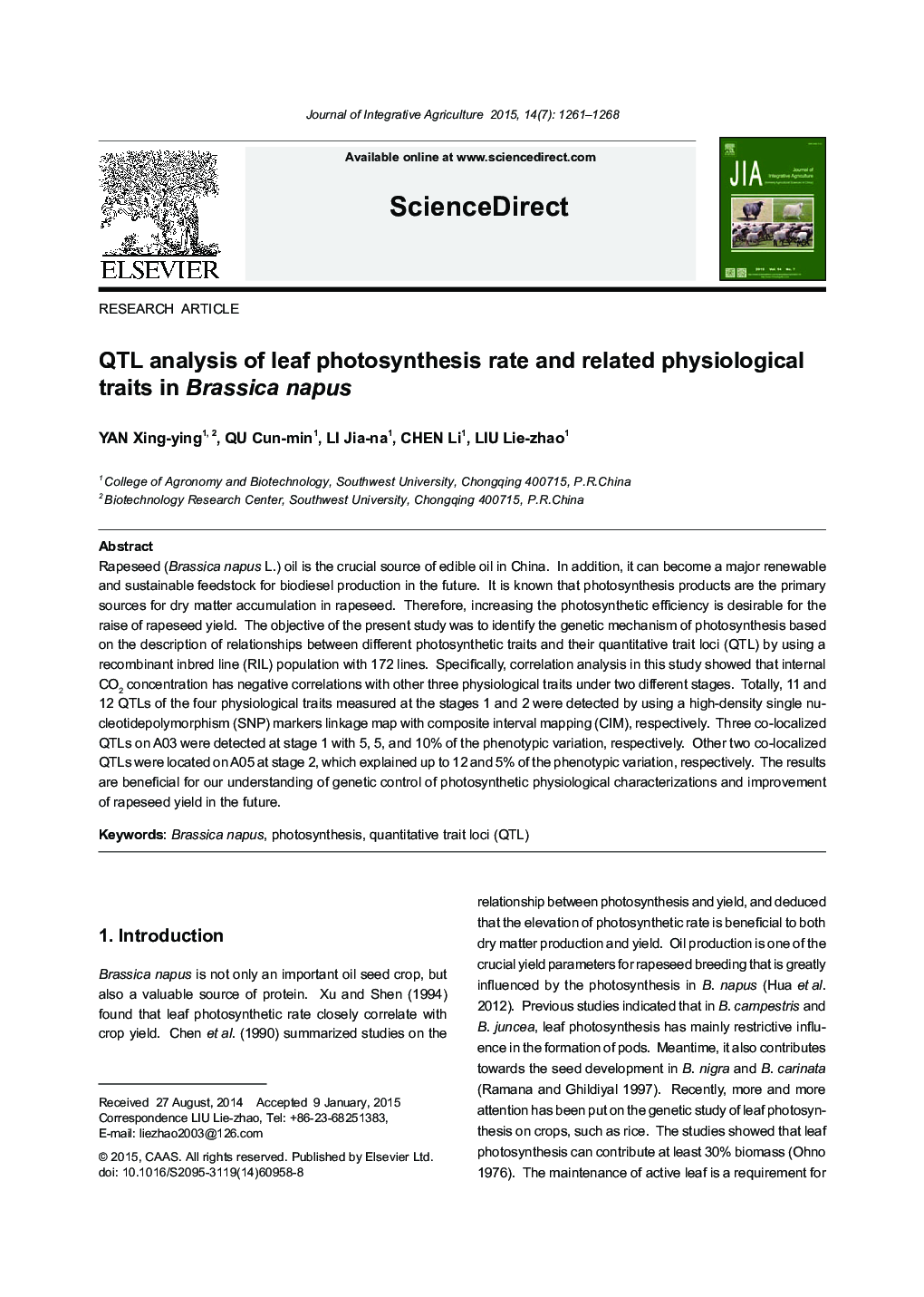| کد مقاله | کد نشریه | سال انتشار | مقاله انگلیسی | نسخه تمام متن |
|---|---|---|---|---|
| 4494304 | 1318708 | 2015 | 8 صفحه PDF | دانلود رایگان |

Rapeseed (Brassica napus L.) oil is the crucial source of edible oil in China. In addition, it can become a major renewable and sustainable feedstock for biodiesel production in the future. It is known that photosynthesis products are the primary sources for dry matter accumulation in rapeseed. Therefore, increasing the photosynthetic efficiency is desirable for the raise of rapeseed yield. The objective of the present study was to identify the genetic mechanism of photosynthesis based on the description of relationships between different photosynthetic traits and their quantitative trait loci (QTL) by using a recombinant inbred line (RIL) population with 172 lines. Specifically, correlation analysis in this study showed that internal CO2 concentration has negative correlations with other three physiological traits under two different stages. Totally, 11 and 12 QTLs of the four physiological traits measured at the stages 1 and 2 were detected by using a high-density single nucleotidepolymorphism (SNP) markers linkage map with composite interval mapping (CIM), respectively. Three co-localized QTLs on A03 were detected at stage 1 with 5, 5, and 10% of the phenotypic variation, respectively. Other two co-localized QTLs were located on A05 at stage 2, which explained up to 12 and 5% of the phenotypic variation, respectively. The results are beneficial for our understanding of genetic control of photosynthetic physiological characterizations and improvement of rapeseed yield in the future.
Journal: Journal of Integrative Agriculture - Volume 14, Issue 7, July 2015, Pages 1261-1268